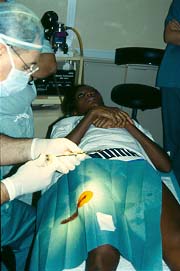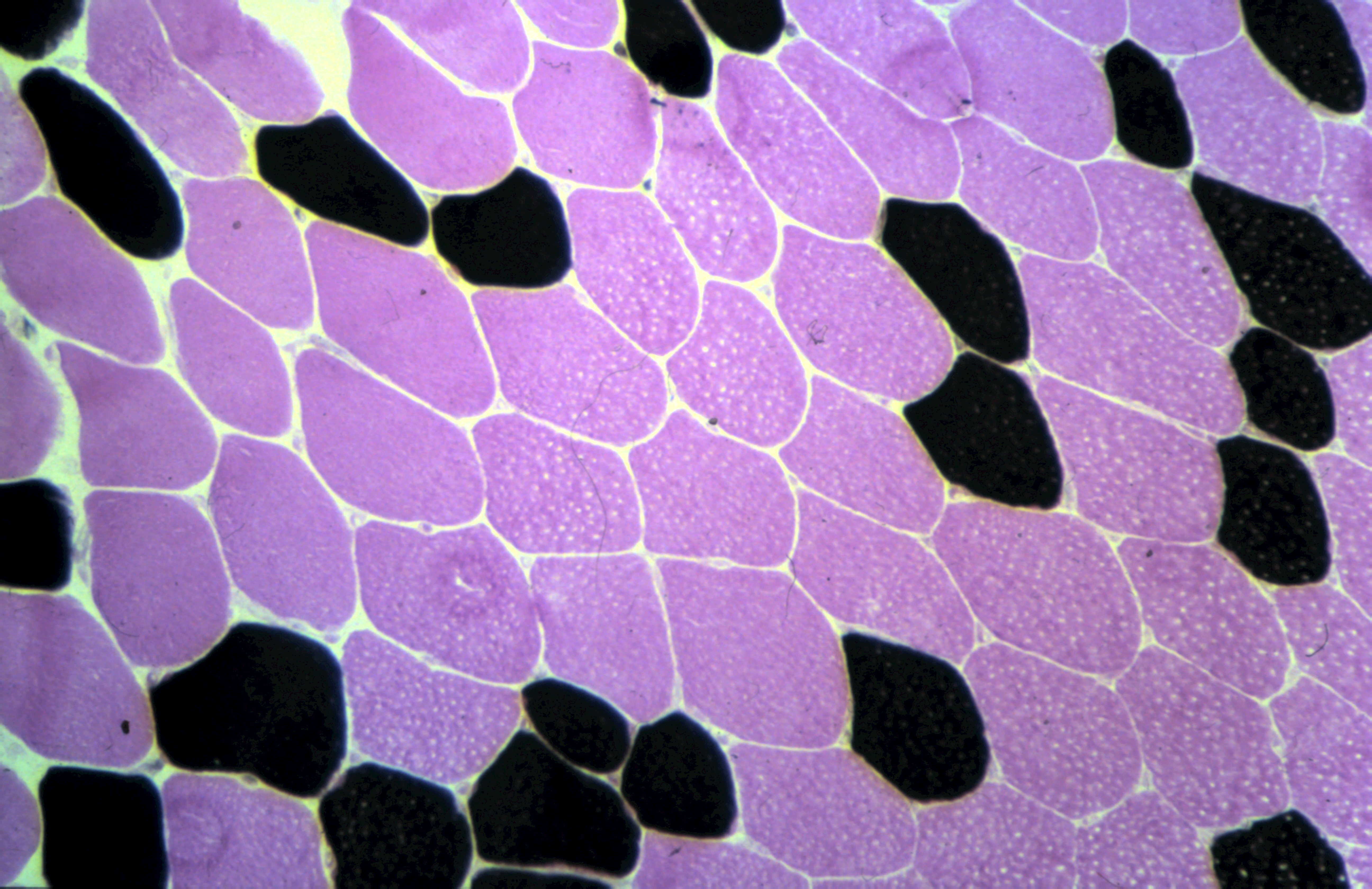These days on many websites and internet forums about fitness, training or muscles you will find a lot of discussions, ideas and opinions regarding muscle fibres. Most of them however do not seem to have a clear idea about muscle fibres. In the past I had quite a few muscle biopsies taken mainly from elite athletes whom I have been coaching.
Basic concepts: All muscles in humans are composed of a mixture of fast and slow twitch fibres.
The muscle fibre composition depends on:
- muscle group and its function
- genetic make-up
- age
- kind of training .
Fast fibres (a.k.a. FT, white fibres or type II fibres) are designed for speed, power and explosiveness, and use mainly alactic and anaerobic glycolytic energy sources.
Slow fibres (a.k.a. ST, red fibres or type I fibres) are designed for endurance and have less ability to produce speed, power and explosiveness, and are perfectly suited for endurance exercise and derive their energy from the aerobic energy system.
The best way to directly find out the fibre composition is taking a muscle biopsy.
A muscle biopsy is a small invasive procedure during which a small piece of muscle tissue, is taken from a specific muscle group. I was mainly interested in the vastus lateralis, since this muscle is used in almost all forms of human locomotion e.g. walking, running, cycling, speed skating, rowing, and other forms of human exercise like throwing or jumping. The way you move is well expressed in the vastus lateralis. For kayak, swimming or wheelchair propulsion, one could look at other muscle groups.

I used muscle biopsies for talent detection (suitable for explosive events or endurance events) and for training monitoring over the long term. In case of Nelli Cooman, we took two biopsies, with a year interval, to see the effect of my training concepts.

I look at:
- muscle composition in percentage: FT vs. ST
- division in subtypes, type II A, II B and II C and type I A and I B
- the size, expressed in diameter of area of these different types

dark – slow twitch fibres
My questions at that time were:
- does the muscle fibre composition explain differences in performance in difference events in athletics?
- does the muscle fibre composition explain differences in performance in the same events in athletics?
- can muscle fibre composition be changed by training?
- if muscle composition can be changed by training, what are the changes and which kind of training accomplishes which change?
A blog is not the right medium to explain it all in detail, and I will save us both from all the literature that might explain it, but the answer to the questions above where:
- yes, there is a very strong correlation between muscle fibre composition and running distances: the shorter the distance, the higher the percentage of fast fibres and the longer the distance, the higher the percentage of slow fibres
- yes, to a large extent muscle fibre composition can explain differences in the same event: in the 100 meters faster sprinters often display a larger percentage of fast fibres and in the long distance events the better runners often display a higher percentage of slow fibres. Of course muscle fibre composition alone will never explain all of the differences in performance (fortunately for us coaches), there are many other performance factors involved in sports performances. But as a sole parameter it can tell you a lot about speed and endurance.
- yes, fibre composition can be changed by training and in both directions from FT to ST and from ST to FT. It all depends on the quality of the training. A methodological problem is the definition of training intensity. An example: marathon runners told me: “I am going to do some speed training”, and they were going to run sets of 1000 meters at a higher pace than marathon pace, not really my idea of speed training. You can imagine that this kind of “speed training” will not cause a shift from ST to FT fibres.
In my opinion, changing the composition of the muscle fibres is less important than changing the diameter selectively (selective hypertrophy) so for explosive events:
a) increase the percentage of FT fibres (shift from ST to FT) or
b) selective hypertrophy of FT fibres (so no hypertrophy of ST fibres!)
Is this solely based on theory, or does it also work in real life?
Well, let me take an example, three times world champion in shot-put (1987, 1991, 1993) Werner Günthor from Switzerland, best throw 22.75 meters. Height 2.00 meters, weight 130 kg compared to his brother who did not train systematically.
| FT/ST % | FT area µm2 | ST area µm2 | FT area % | ST area % | |
| Günthor | 40/60 | 10264 | 3430 | 66.6 | 33.3 |
| brother | 24/76 | 6340 | 3790 | 34.2 | 65.8 |
What you see in the table above is that Günthor had a relatively low percentage of FT fibres for an extremely explosive athlete (he also did 2.05 meter in the high jump, from a three stride approach). But he compensated for that with a tremendous hypertrophy of the type II fibres (indicated in red), so the total FT area can be compared with somebody who has untrained (=untrained size) 66% FT fibres
If you want to know how Günthor accomplished this, take a look at one of the video’s of his training at YouTube: Video training Werner Günthor e.g: https://www.youtube.com/watch?v=zJImRx3rpW0
Some literature:
-Dubowitz, V: Muscle Biopsy. A practical approach; 2nd edition, Bailliere Tindall, 1985.
-Brumback, R.A; Leech, R.W: Color Atlas of Muscle Histochemistry; PSG Publishing,1984.
-Swash, M; Schwartz, M.S: Biopsy Pathology of Muscle, Chapman and Hall Medical, 1984.
-Lieber, R.L; Skeletal Muscle. Structure and Function; Williams &Wilkins, 1992.
-Squire, J.M: Muscle: Design, Diversity and Disease; Benjamin/Cummings Publ. 1986.
And there is more about this subject, much, much more.

Hello,
I am a Ph.D. student studying under Dr. Mike Stone at East Tennessee State University studying this very topic in weightlifters and powerlifters.
What is the name of the study pertaining to fiber type composition of Günthor and his brother? Is it possible to obtain the full-text or the unpublished data?
Thank you.
We studied fast and slow twitch muscle fibres for many years.
Would like to make contact